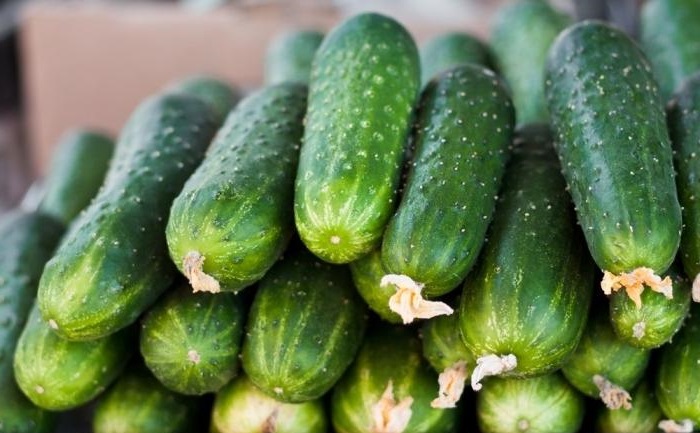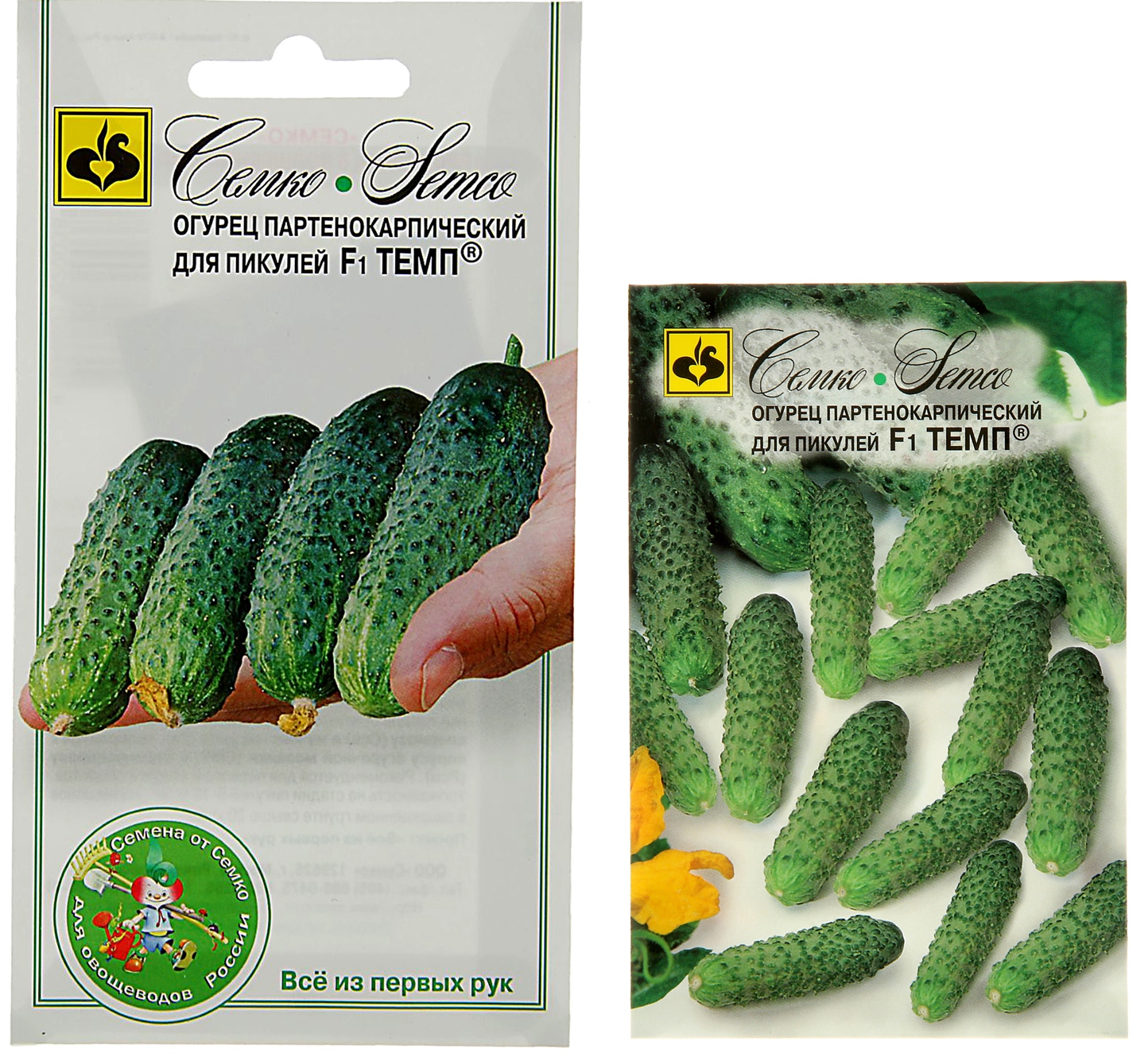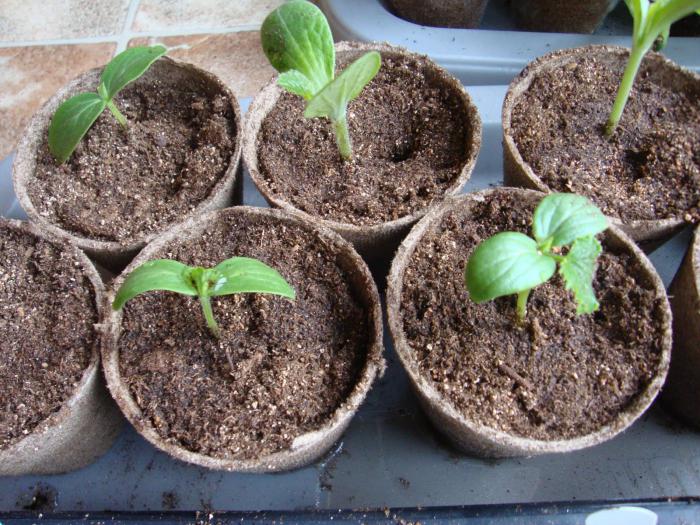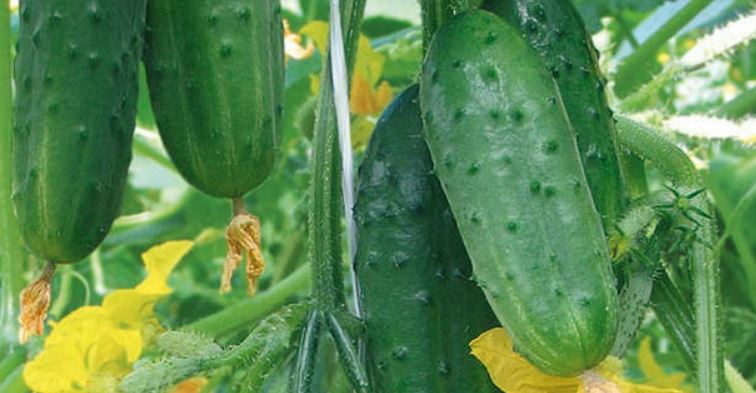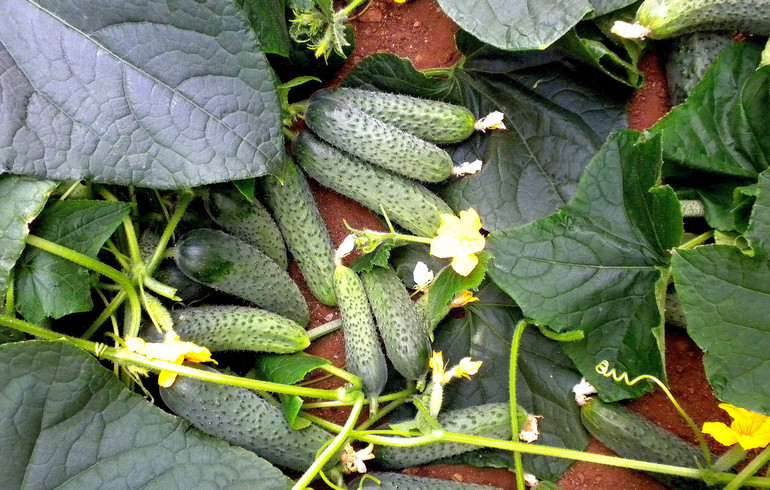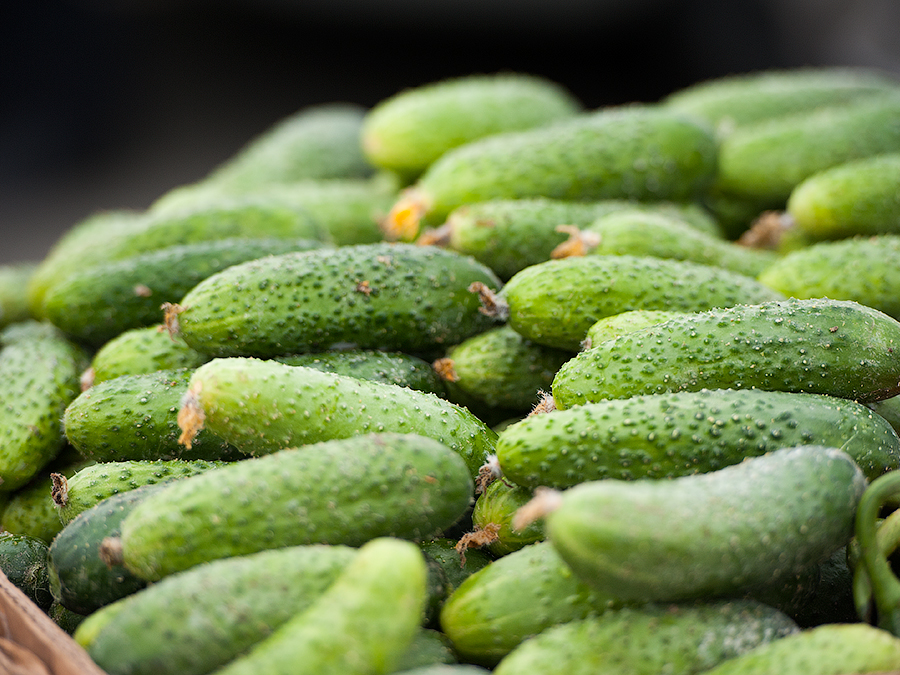The Temp F1 cucumber hybrid is one of the most promising. It was bred by crossing several varieties by a breeder of the Moscow company "Semko-Junior".
Description of the hybrid Temp F1
Cold resistance... Cucumber Temp bears fruit well even in cold summers. In addition, it is resistant to heat and high temperatures.
Hive parameters. The bushes of this hybrid have unlimited growth and are indeterminate. The branchiness of plants is weak. The green leaves are medium in size.
Timing of fruiting. You can harvest the fruits of the hybrid already in 37 ... 38 days after the sprouts appear (for pickles), and after 42-44 days gherkins ripen. In terms of ripening, the F1 rate refers to early maturing. Fruiting is very long, up to frost.
Bloom. Hybrid - parthenocarpic, is self-pollinated, only female flowers appear on its bushes. The type of ovary formation is bunched (bouquet). 3-5 ovaries are formed in one node.
Fruit characteristics. Cucumbers are characterized by a cylindrical shape and are standard gherkins 8-10 cm long, weighing 70-80 g. If you pick Tempa fruits at the pickle stage, then their lengths will be 5-6 cm, weight - 40-50 g. The skin color of cucumbers is dark green with light stripes, medium tuberosity, medium density of pubescence, white thorns. The pulp is characterized by a typical cucumber taste and aroma, does not contain bitterness. The cucumbers are crispy and juicy.
Productivity. Since both pickles and gherkins can be obtained from Tempa, the yield may vary. In the first case, it will be 5-7 kg / m2, and in the second - 11-15 kg / m2.
Disease resistance. The rate is not affected by cladosporia (brown spot) and powdery mildew.
Agrotechnics
Landing. Cucumbers Temp F1 are grown in open and protected ground: greenhouses, hotbeds, on loggias and balconies at home. The recommended planting scheme in a greenhouse provides for a distance between adjacent seedlings of 12-15 cm and a row spacing of 60 cm. In the open field, it is advisable to plant Temp according to a square-nesting scheme.
Care. It consists in the watering regime established for cucumbers and feeding (once every 2 weeks). The temperature and humidity conditions for growing in a greenhouse are standard.
When the stem reaches the height of the trellis, it is limited in growth by edging - pinching the top. Preventive treatment against pests and diseases is not carried out, since the hybrid is characterized by increased resistance to them.
Advantages and disadvantages
The advantages of Pace F1 include the following properties:
- excellent taste of cucumbers;
- cucumbers not removed on time do not outgrow;
- the versatility of the use of fruits (they can be put into conservation and pickling or consumed fresh);
- excellent keeping quality and transportability of cucumbers;
- early maturity, allowing you to grow a hybrid even in the coldest regions of the country;
- high yield and bunch type of fruiting;
- resistance to temperature extremes;
- immunity to many cucumber diseases.
Rarely does a cucumber hybrid combine so many benefits. This hybrid has only one drawback - the planting material is very expensive.
